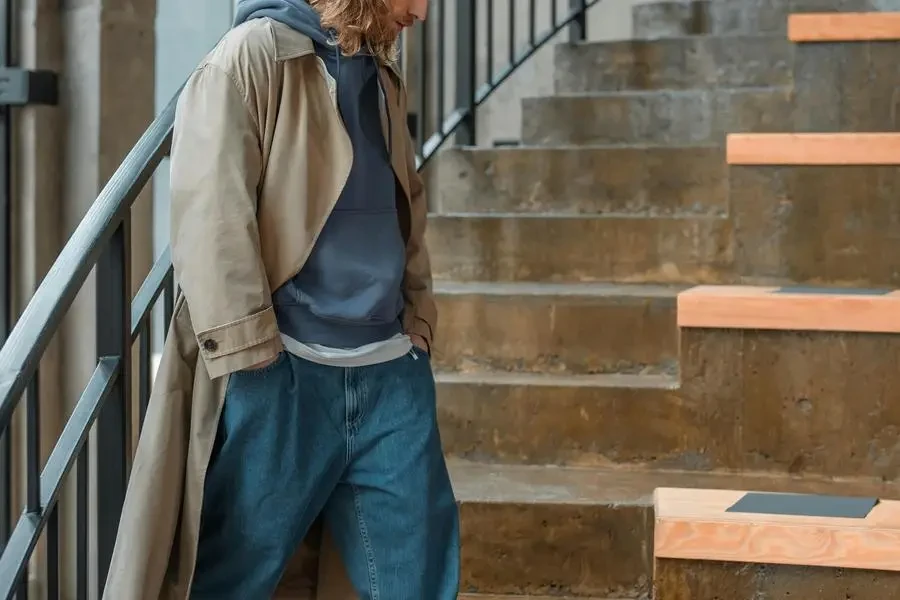With winter and the wind chill approaching, there is an essential piece of outerwear for men – the down coat. It not only keeps you warm, but does so in a way that is fashionable, too. This guide will inform you of a handful of the latest technical details about down coats for men, and identify the features that really matter.
Table of Contents:
– Understanding down insulation
– Choosing the right fill power
– Assessing shell materials and construction
– Features to look for in a down coat
– Caring for your down coat
Understanding down insulation

Down insulation is the fibrous filling taken from the soft under feathers of geese or ducks. It’s highly prized for its ability to provide loft – that is, warmth in relation to the filling’s weight – and compressibility. How it works is this: by trapping air in the clusters of feathers, down creates a layer of still air around the wearer’s body.
A chief advantage of down insulation, after all, is its warmth-to-weight ratio: a down coat can keep you toasty, but it won’t weigh you down with the bulk that plagues many other insulating materials. In turn, it’s not just outdoorsy types who benefit but those who live in cities too.
But not all down is created equal. The quality of down is measured by its fill power, a topic explored in the next section. Additionally, by understanding the differences, a person can choose a coat that fits her needs, whether it’s sub-zero cold or merely a mild winter’s day.
Choosing the right fill power

Fill power refers to the amount of space that a yard of down takes up in a cubic foot, or the fluffiness of the down, and in turn, its ability to insulate against the cold. Fill power varies from anywhere around 400 to 900, with the higher numbers meaning better quality down.
A coat with a fill power of 500-600 is adequate for mild winter conditions and light use. These coats are warm and relatively cheap. If you live in a colder climate or intend to use your coat for more rigorous outdoor activity, you’ll want a fill power of 700-900. These high fill power coats provide the best insulation. They’re also more compressible than lower fill power coats, so you can more easily pack and carry them.
But you may find that fill power isn’t your primary concern when it comes to choosing a coat; the entire way the coat is designed – in conjunction with your intended use – could be more important than fill power alone. For example, while top-of-the-line goose down with high fill power will create super-insulating air pockets, the shell material, construction, and features of a down jacket can also contribute considerably to overall utility.
Assessing shell materials and construction

Such a coat relies on a shell layer to protect the fluffy insulation from moisture, wind and wear. And here, too, the options vary widely. Polyester, nylon and various speciality fabrics – some coated with water-resistant or even waterproof finishes – are used to manufacture shells.
The shell of a down jacket is made of polyester and often comes with water-resistant finish. Good polyester shells will block light rain and snow. A shell made of nylon is typically lighter and available in both water-resistant and waterproof variants. Waterproof shells are important because down will lose its insulation when it gets wet.
Other factors include how it’s constructed: a down coat with baffle construction, which means that it’s sewn in such a way as to create chambers to keep the insulation in place, will work better and last longer than one made without any baffles. Welded or bonded baffles (meaning the coat is boned without stitching) are even better, since they’re water resistant.
Features to look for in a down coat

Down coats today have many features designed to enhance comfort and practical use. Here are some of the most important.
H doubly insulated hood is warmer, as is one that cinches down over your face. Adjustable hoods are crucial.
Pockets: The more the better; hand-warmer pockets, chest pockets, even interior pockets offer handy options for storing kit. Fleece-lined ones are ideal for handwarming.
Adjustable Cuffs and Hem: For a snug fit that keeps out cold air and locks in the warmth, look for elastic or Velcro cuffs and drawcord hems.
Zippers and Closures: Heavy-duty zippers that are well-built are important for longevity. Two-way zippers allow you to unzip the coat from the bottom to allow better range of motion. Storm flaps over zippers give extra protection against wind and moisture.
Weight and Packability: For those who travel or are outdoorsy, the lighter and packable the better. Most down coats come with a stuff sack or will compress down to a small size for packing.
If you consider these features, you can find a down coat that is both warm and practical.
Caring for your down coat

The better care you take of your down coat, the longer it will last and the better it will perform. So take careful care! Here are a few tips.
- Care: Wash after use according to manufacturer’s instructions. Down coats can generally be machine washed on a gentle cycle with a down-specific detergent. Do not use regular detergent because this will remove the natural oils from the down.
- Drying: Drying a down coat is very important because it can take a while. We used the lowest heat option and then put in one clean tennis ball or dryer ball to help fluff the down back up. We completely dried the coat because if any moisture remains, mildew and mould will start to grow.
- Storage: Keep your down coat in a cool, dry place. Don’t compress it for extended periods – a damaged down filling is a cold down filling – use a breathable storage bag instead of a plastic one and let air circulate.
- Repairs: Repair any tears and similar damage as quickly as possible – many manufacturers offer repair services, or you can use repair kits made for down coats. Keeping the shell in good condition will preserve the performance of the coat overall.
If you follow these care instructions, you’ll help to ensure that your down coat can help keep you warm and comfortable for many winters to come.
Conclusion
With the right information, it is possible to select the best down coat for men that offers the perfect balance of warmth, comfort and durability. For city or for countryside, there is a down coat that is perfect for you. You just need to know what to look for and in this article I will spell out what you need to consider.



